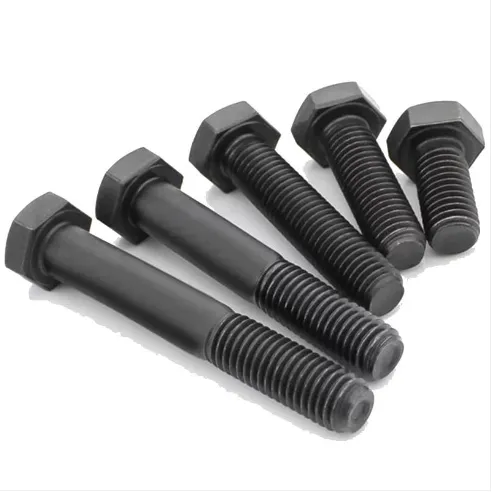Manufacturing Square Headed Bolts for Various Industrial Applications and Custom Solutions
Dec . 04, 2024 05:10 Back to list
Manufacturing Square Headed Bolts for Various Industrial Applications and Custom Solutions
The Square-Headed Bolts Factory An Overview of Innovation and Industry
In the ever-evolving world of manufacturing, the square-headed bolts factory stands as a testament to the merging of tradition and modern technology. These seemingly simple components play a crucial role in various industries, from construction to automotive, and their production requires precision, quality, and an understanding of market demands. This article explores the significance of square-headed bolts, the manufacturing process involved, and the factory's impact on both local and global markets.
Understanding Square-Headed Bolts
Square-headed bolts are fasteners with a square-shaped head that provides a larger surface area for torque application, making them ideal for use in wood and metal applications where a secure hold is essential. Their design helps prevent slippage during tightening, which is particularly valuable in applications requiring high-stress resistance. Typically made from steel or other durable materials, square-headed bolts are renowned for their strength and reliability.
The Manufacturing Process
The production of square-headed bolts occurs in several stages, each critical to achieving the desired quality and performance. The process begins with the selection of raw materials, usually high carbon steel or stainless steel, depending on the intended application. After procurement, the materials undergo several stages of preparation, including cutting to size, heating, and shaping.
The heating process is crucial; the steel must be heated to specific temperatures to ensure malleability, which allows for the formation of the intended shapes without compromising the material's integrity. Once heated, the steel is forged into the desired bolt shape using hydraulic presses or forging machines. Precision is key at this stage, as even the slightest deviation can affect the bolt's performance.
After shaping, the bolts go through a cooling process, which hardens the material. This is followed by machining, where threads are cut, and heads are shaped to ensure compatibility with tools and fittings in the assembly process. Quality control measures are implemented at each stage, including visual inspections and tests for tensile strength and tolerance.
Technology and Automation
square headed bolts factory

In recent years, advancements in technology have revolutionized the manufacturing of square-headed bolts. Automation and computer numerical control (CNC) machines have streamlined production, enhancing precision and efficiency. These machines can operate continuously, reducing labor costs and increasing output without sacrificing quality.
Moreover, the integration of Industry 4.0 technologies allows for real-time monitoring and data analysis, enabling factories to optimize their operations. Predictive maintenance can be employed to minimize downtime and improve the reliability of machinery, ensuring that production runs smoothly.
Sustainability and Environmental Responsibility
As industries worldwide seek to reduce their environmental impact, factories producing square-headed bolts are also taking steps towards sustainability. The adoption of eco-friendly practices, such as recycling scrap materials and utilizing energy-efficient machinery, demonstrates a commitment to environmental stewardship. Additionally, many factories are exploring alternative materials, such as biodegradable composites for specific applications, to further reduce their carbon footprint.
The Global Market Influence
The square-headed bolts factory is not only a local hub of production but also plays a significant role in the global supply chain. With the increase in international trade, these factories frequently export their products to countries around the world. The demand for square-headed bolts spans various sectors, including construction, automotive, and manufacturing, making them essential components in infrastructure and technological development.
Furthermore, the rise of e-commerce has transformed how these factories reach their customers. Online platforms enable factories to connect directly with buyers, streamline order processing, and expand their market reach.
Conclusion
The square-headed bolts factory exemplifies the intersection of traditional manufacturing techniques and modern technology. By focusing on precision, quality, and sustainability, these factories not only meet the growing needs of industries worldwide but also contribute to a more sustainable future. As global demands evolve, the square-headed bolts factory will continue to innovate and adapt, ensuring that it remains a vital player in the manufacturing landscape. The journey of these simple yet essential components from factory to final product underscores the importance of craftsmanship and technological advancement in today's industrial world.
Latest news
-
High-Quality Panel Stud Bolt Reliable Panel Stud Bolt Factory & Suppliers
NewsJul.08,2025
-
High-Precision Fine Thread Locknuts Manufacturer & Supplier Custom Solutions
NewsJul.08,2025
-
PH Imperial Stud Bolt – High Strength Fasteners from Leading Supplier & Factory
NewsJul.07,2025
-
High-Quality Allen Wrench Bolts Leading Factory, Company & Suppliers
NewsJul.07,2025
-
Wholesale Ball Stud Bolt - High Quality Supplier & Factory Price Reliable Wholesale Ball Stud Bolt Company
NewsJul.06,2025
-
High-Strength Alloy Bolts Manufacturer & Supplier Quality Alloy Fasteners Factory
NewsJul.06,2025
